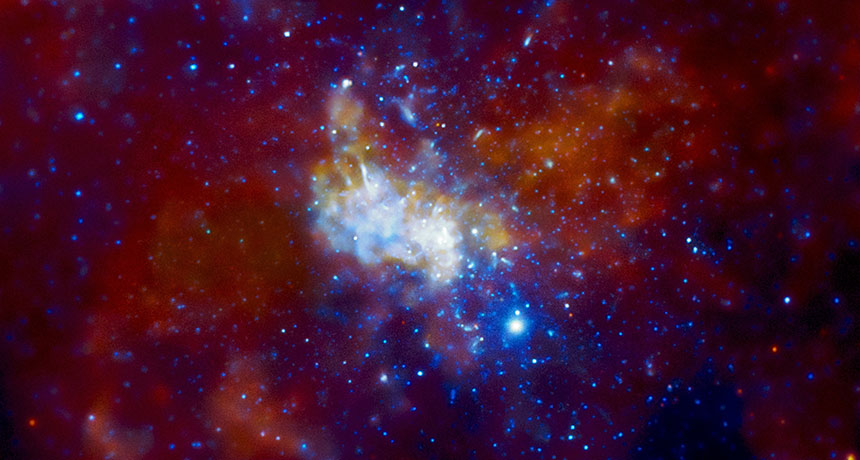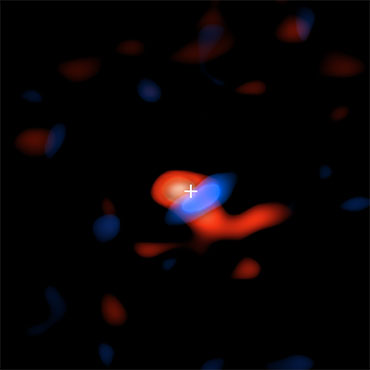The accretion disk around our galaxy’s black hole has been spotted at last
The finding confirms that gases are orbiting the Milky Way’s gravitational behemoth

ORGANIZED CHAOS The black hole in the center of the Milky Way has a chaotic entourage of stars and gas, shown here in X-ray light. But new observations with the ALMA telescope array show a relatively neat disk of glowing gas rotating around the black hole.
F. Baganoff et al, MIT, CXC/NASA
- More than 2 years ago
Some supermassive black holes announce their presence with screaming hot disks of orbiting gases. But the behemoth at the center of the Milky Way has been shy and demure. Now, astronomers have finally spotted the black hole’s faintly glowing accretion disk of infalling material, long suspected but never before seen.
“I was very surprised that we actually saw it,” says astrophysicist Elena Murchikova at the Institute for Advanced Study in Princeton, N.J. The disk was observed using the Atacama Large Millimeter/submillimeter Array, or ALMA, in northern Chile, the researchers report in the June 6 Nature.
The Milky Way’s supermassive black hole, named Sagittarius A*, is a behemoth at 4 million solar masses. But while some black holes gobble the gas and dust around them, Sgr A* picks daintily. Such “underfed” black holes “don’t have enough food supply” for their surrounding gases to glow brightly, Murchikova says.

Previously, scientists had seen a cloud of hot gas (around 10 million kelvins) emitting high-energy X-rays around Sgr A*, as well as stars and gas clouds circling the black hole. But those gas sources didn’t seem to be organized into a neat, orbiting disk. Murchikova and colleagues focused their search on cooler gases, about 10,000 kelvins, located within about 280 billion kilometers of Sgr A*. Looking at only the hot gas, she explains, is like trying to study Earth’s climate by focusing on summers in the desert. “Gas of both types should be falling into the black hole,” Murchikova says. “You need a full picture.”
ALMA measured the cooler gases by observing particles of light in a particular wavelength. Those photons are emitted when electrons and protons in the gases combine to form hydrogen atoms. When Murchikova and colleagues looked at the photon distribution around the black hole, they saw an oblong disk with a gap in the middle where the black hole sits.
On one side of the disk, the light wavelength was stretched, or redshifted. On the other side, the light was squished, or blueshifted. That finding means that one side of the disk is moving toward Earth, and the other is moving away — a clear sign that the disk is rotating.
“I never thought I would actually be able to see such an organized rotation,” Murchikova says.
The team also estimated the disk’s mass — between 0.00001 and 0.0001 times the mass of the sun, depending on how thick the disk might be. And the researchers estimated how much material is falling into the black hole, which they say is about 2.7×10-10 solar masses per year, or roughly about half the mass of the dwarf planet Ceres.
“I think it’s very exciting,” says astrophysicist Anna Ciurlo of UCLA, who was not involved in the new work. Her team has used the Keck telescope in Hawaii to look for signs of the disk in infrared wavelengths, but found nothing.
If the disk’s activity can be picked up by ALMA, but not Keck, that “makes us think there’s some more peculiar process going on that is not totally understood yet,” Ciurlo says. More observations with ALMA and with the Event Horizon Telescope could help resolve the mystery.







